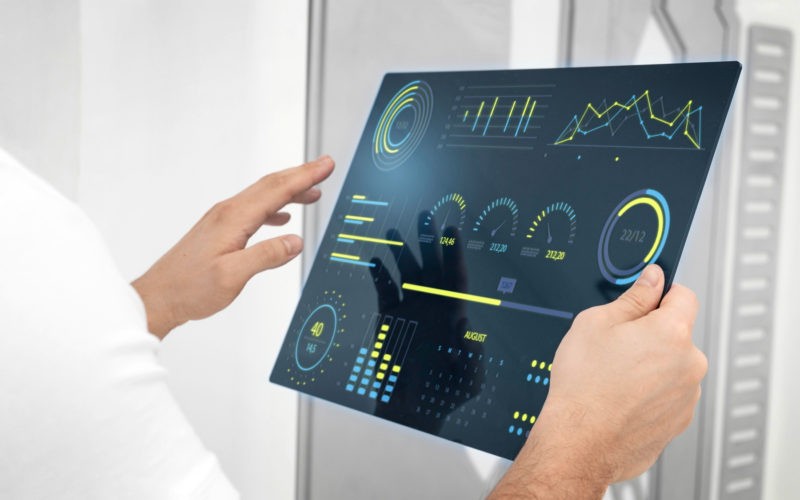Accurate demand forecasting has become essential for staying competitive in a crowded marketplace. Companies across industries rely on demand forecasting to optimize inventory levels, streamline supply chains, and ultimately, meet customer expectations. However, traditional forecasting methods, which largely depend on historical data and linear models, are proving inadequate in the face of rapidly changing consumer behavior and increasingly volatile markets. Enter Machine Learning (ML), a technology that is not only enhancing demand forecasting but also redefining it altogether.
Machine learning offers a quantum leap in forecasting accuracy by leveraging vast datasets, identifying complex patterns, and continuously learning from new data. The integration of ML into demand forecasting systems is enabling companies to move from reactive to proactive strategies, where predictions are not just more accurate but also more timely and relevant. As businesses aim to become more agile and responsive, understanding and adopting ML-driven demand forecasting is critical for maintaining a competitive edge.
This article delves into the transformative impact of ML on demand forecasting. We’ll explore the evolution of forecasting methods, examine how ML is reshaping this critical business function, and provide an in-depth look at six key ML techniques that are making a difference. We’ll also discuss real-world applications, challenges, and future trends that will further define the landscape of demand forecasting. This comprehensive guide is designed to equip software development professionals with the insights needed to leverage ML in building more robust and adaptive forecasting solutions.

The Evolution of Demand Forecasting
Demand forecasting has come a long way from its rudimentary beginnings. Traditionally, businesses relied on basic statistical methods such as moving averages and exponential smoothing to predict future demand based on historical sales data. These methods, while effective in stable environments, fall short in today’s dynamic markets where demand is influenced by a myriad of factors ranging from economic shifts to social media trends.
Traditional Forecasting Techniques
Conventional methods like time series analysis and econometric models have been the backbone of demand forecasting for decades. These techniques typically assume that past patterns will continue into the future, making them somewhat rigid and less adaptable to sudden changes. For instance, time series models like ARIMA (Auto-Regressive Integrated Moving Average) are effective for short-term predictions but struggle with long-term accuracy, especially in the face of irregular demand patterns.
The Need for Change
The limitations of traditional methods became increasingly apparent as businesses began to deal with more complex, high-volume data. The rise of e-commerce, global supply chains, and real-time data streams has introduced new variables that traditional models were never designed to handle. Moreover, the linear nature of these models doesn’t account for non-linear relationships within data, such as how social sentiment might affect consumer buying behavior.
In response to these challenges, the industry has seen a shift towards more sophisticated approaches, with Machine Learning leading the charge. Unlike traditional methods, ML models excel in processing vast amounts of data from diverse sources and uncovering hidden patterns that would otherwise go unnoticed. This evolution marks a paradigm shift from deterministic forecasting to probabilistic and adaptive forecasting, where models continuously learn and improve over time.
How Machine Learning is Transforming Demand Forecasting
Machine Learning is revolutionizing demand forecasting by addressing the limitations of traditional methods and offering unprecedented accuracy, scalability, and adaptability. Unlike static models that rely heavily on historical data and predefined assumptions, ML models are dynamic — they learn and evolve as new data becomes available, making them particularly suited for today’s fast-paced business environment.
Handling Large and Complex Data Sets
One of the most significant advantages of ML is its ability to process and analyze vast amounts of data from multiple sources — social media, weather forecasts, economic indicators, and more. This capability allows businesses to incorporate a wide range of variables into their forecasts, leading to more accurate predictions. For instance, ML models can analyze social media trends to gauge consumer sentiment, which can then be used to predict demand spikes or declines.
Adaptability to Market Changes
Traditional forecasting models are often rigid, making them less effective in volatile markets. In contrast, ML models are highly adaptable. They continuously update themselves as new data flows in, allowing them to adjust predictions in real-time. This adaptability is crucial in industries where demand can fluctuate rapidly, such as fashion retail or consumer electronics.
Enhancing Forecasting Accuracy
Accuracy is where ML truly outshines traditional methods. By leveraging techniques such as deep learning and neural networks, ML models can identify complex, non-linear relationships within data that would be impossible to detect with conventional methods. This leads to more precise forecasts that can help businesses reduce stockouts, minimize excess inventory, and optimize supply chain operations. Moreover, the continuous learning process inherent in ML models means that their accuracy improves over time as they are exposed to more data.
Accuracy is where ML truly outshines traditional methods. By leveraging techniques such as deep learning and neural networks, ML models can identify complex, non-linear relationships within data that would be impossible to detect with conventional methods. This leads to more precise forecasts that can help businesses reduce stockouts, minimize excess inventory, and optimize supply chain operations. Moreover, the continuous learning process inherent in ML models means that their accuracy improves over time as they are exposed to more data. WisdomAI, for example, offers an AI-driven approach to continuously enhance forecasting accuracy, leveraging real-time data from various sources, not just historical sales trends.
In essence, Machine Learning is not just improving demand forecasting—it’s transforming it into a more dynamic, data-driven process that allows businesses to stay ahead of the curve in a constantly changing market landscape.
6 Key Machine Learning Methods Redefining Demand Forecasting
Machine Learning encompasses a wide array of techniques, each with its unique strengths in demand forecasting. Below, we explore six key ML methods that are reshaping how businesses predict and respond to demand fluctuations.
1. Regression Analysis (Linear and Non-Linear)
Regression analysis, both linear and non-linear, is one of the most fundamental techniques in ML. In demand forecasting, it’s used to model the relationship between demand and various independent variables such as price, advertising spend, and economic indicators. While linear regression is effective for simpler relationships, non-linear regression captures more complex interactions, providing a more nuanced forecast.
2. Time Series Forecasting (ARIMA, SARIMA, and LSTM)
Time series forecasting is critical for predicting future demand based on past trends. Traditional models like ARIMA and SARIMA are now enhanced by ML techniques such as Long Short-Term Memory (LSTM) networks, which are designed to handle sequential data. LSTM networks are particularly powerful in capturing long-term dependencies, making them ideal for industries with seasonal demand patterns.
3. Random Forests and Decision Trees
Random Forests and Decision Trees are ensemble learning methods that improve forecasting by aggregating the predictions of multiple models. These techniques are excellent for handling high-dimensional data with complex interactions. In demand forecasting, they can identify which factors most significantly impact demand and how these factors interact.
4. Neural Networks and Deep Learning
Neural networks, particularly deep learning models, are revolutionizing demand forecasting by capturing intricate patterns in large datasets. These models are highly effective in scenarios where demand is influenced by a vast array of factors, from economic conditions to consumer behavior. Deep learning’s ability to process unstructured data, such as text and images, also opens new avenues for incorporating diverse data sources into forecasts.
5. Support Vector Machines (SVM)
Support Vector Machines (SVM) are versatile ML models that can be used for both classification and regression tasks. In demand forecasting, SVMs excel at capturing non-linear relationships in data, making them particularly useful in complex markets where demand is influenced by multiple, interacting factors.
6. Reinforcement Learning
Reinforcement Learning (RL) represents a cutting-edge approach in ML, where models learn to make decisions by receiving feedback from their environment. In demand forecasting, RL can be used to optimize inventory levels by continuously adjusting predictions based on real-time sales data. This dynamic approach allows businesses to respond more effectively to sudden changes in demand.
| ML Method | Strengths | Use Cases |
| Regression Analysis | Simple, interpretable, good for linear relationships | Predicting demand based on price and promotional activities |
| Time Series Forecasting | Handles sequential data, captures long-term dependencies | Seasonal demand patterns, long-term sales trends |
| Random Forests/Decision Trees | Handles high-dimensional data, captures interactions | Identifying key demand drivers, complex market environments |
| Neural Networks/Deep Learning | Captures intricate patterns, processes unstructured data | E-commerce, retail, where demand is influenced by multiple factors |
| Support Vector Machines (SVM) | Captures non-linear relationships | Complex markets with interacting demand drivers |
| Reinforcement Learning | Dynamic, adapts to real-time data | Inventory optimization, dynamic pricing strategies |
Real-World Applications and Case Studies
Machine Learning’s impact on demand forecasting is already being felt across a variety of industries. Companies that have embraced ML-driven forecasting methods are seeing tangible benefits in terms of accuracy, efficiency, and responsiveness. Below are some real-world examples illustrating how ML is transforming demand forecasting.
Retail Industry
Retailers, particularly those operating in e-commerce, are leveraging ML to predict demand with a level of precision that was previously unimaginable. By analyzing data from multiple sources—including social media trends, customer reviews, and online browsing behavior—retailers can anticipate shifts in consumer demand more accurately. For example, Amazon uses advanced ML algorithms to predict product demand and optimize its inventory across global fulfillment centers, ensuring that the right products are available at the right time.
Manufacturing and Supply Chain Management
In manufacturing, ML is being used to forecast demand for raw materials, components, and finished products. This is particularly important in industries like automotive or electronics, where supply chains are complex and global. Companies are using ML to optimize their production schedules, reduce lead times, and minimize the risk of stockouts or overproduction. For instance, Siemens has implemented ML models to forecast the demand for critical components in its manufacturing processes, resulting in a more efficient and responsive supply chain.
E-commerce Platforms
E-commerce platforms are at the forefront of ML-driven demand forecasting, utilizing customer data to personalize shopping experiences and optimize stock levels. ML models analyze user behavior, purchase history, and even time of day to predict what products are likely to be in demand. This not only improves inventory management but also enhances customer satisfaction by ensuring that popular items are always in stock. A prime example is how Zalando, a leading online fashion retailer, uses ML to predict fashion trends and adjust its inventory in real-time.
These case studies highlight the practical benefits of ML in demand forecasting, demonstrating how companies can gain a competitive edge by adopting these advanced techniques. As ML continues to evolve, we can expect to see even more innovative applications that push the boundaries of what is possible in demand forecasting.
Challenges and Considerations in Implementing ML for Demand Forecasting
While Machine Learning offers significant advantages in demand forecasting, its implementation is not without challenges. Companies looking to leverage ML in their forecasting processes must navigate several obstacles to realize the full potential of this technology.
Data Quality and Availability
One of the most critical factors in the success of ML models is the quality and availability of data. Poor data quality—such as incomplete, inaccurate, or outdated information—can lead to unreliable forecasts. Additionally, businesses must ensure that they have access to the right types of data, including external sources like economic indicators and social media sentiment, which are often not integrated into traditional forecasting systems. Ensuring data is clean, relevant, and comprehensive is a prerequisite for effective ML-based forecasting.
Model Interpretability and Transparency
As ML models become more complex, interpreting their outputs becomes increasingly challenging. Unlike traditional statistical models, which are often easier to understand and explain, ML models—especially deep learning models—can be seen as “black boxes.” This lack of transparency can be a significant barrier to adoption, particularly in industries where decision-makers need to justify their forecasts. It is crucial to develop tools and techniques that make these models more interpretable, allowing stakeholders to trust and act on their predictions.
Integration with Existing Systems
Integrating ML models with existing demand forecasting systems and business processes can be a complex and resource-intensive task. This integration often requires significant changes to IT infrastructure, including data storage, processing capabilities, and software interfaces. Additionally, businesses must ensure that their teams are adequately trained to use these new tools, which may involve a steep learning curve. Successful integration depends on a well-thought-out strategy that considers both the technical and organizational aspects of ML adoption.
The Need for Expertise
The implementation of ML in demand forecasting requires specialized skills that may not be readily available within a company. Data scientists, ML engineers, and domain experts are essential for developing, deploying, and maintaining ML models. However, the demand for these professionals often exceeds supply, leading to a talent gap that can hinder the adoption of ML technologies. Companies must invest in training and development or partner with external experts to bridge this gap and fully capitalize on the benefits of ML-driven forecasting.
By understanding and addressing these challenges, businesses can better position themselves to successfully implement ML in demand forecasting, thereby enhancing their ability to respond to market dynamics and meet customer needs more effectively.
Future Trends in Machine Learning for Demand Forecasting
As Machine Learning continues to advance, several emerging trends promise to further revolutionize demand forecasting. These trends will shape how businesses approach forecasting, making it more accurate, automated, and ethical.
AI-Driven Automation
One of the most significant trends is the move towards AI-driven automation in demand forecasting. This involves creating fully automated systems that require minimal human intervention. These systems use ML algorithms to process vast amounts of data in real-time, continuously updating forecasts as new information becomes available. AI-driven automation can significantly reduce the time and effort required for demand forecasting, allowing businesses to react more swiftly to market changes. Companies like Walmart are already exploring AI-driven forecasting systems that automate everything from inventory management to pricing strategies, providing a glimpse into the future of retail operations.
Ethical Considerations in AI
As ML models become more pervasive, there is a growing emphasis on ethical considerations, particularly regarding data privacy and bias. Businesses must ensure that their ML models are transparent, fair, and accountable. This includes addressing issues like algorithmic bias, which can lead to unfair or inaccurate forecasts if not properly managed. Additionally, as regulations around data privacy become more stringent, companies will need to adopt practices that ensure compliance while still leveraging the full power of ML. The focus on ethical AI is not just a legal obligation but also a business imperative, as customers and stakeholders increasingly demand transparency and fairness.
Advances in Unsupervised Learning
Another exciting trend is the rise of unsupervised learning techniques in demand forecasting. Unlike supervised learning, which relies on labeled data, unsupervised learning can identify hidden patterns and correlations in unlabeled data. This capability is particularly valuable in scenarios where historical data is sparse or incomplete. Advances in unsupervised learning will enable businesses to uncover insights that were previously out of reach, leading to more accurate and robust demand forecasts. Companies are beginning to experiment with these techniques, opening up new possibilities for innovation in forecasting methods.
These trends indicate that the future of demand forecasting will be characterized by greater automation, enhanced ethical practices, and the adoption of cutting-edge ML techniques. As these trends gain momentum, businesses that stay ahead of the curve by integrating them into their forecasting processes will be better equipped to navigate the complexities of modern markets.
Conclusion
Machine Learning is fundamentally transforming the landscape of demand forecasting, offering businesses new tools to predict and respond to market dynamics with unprecedented accuracy. From handling vast and complex data sets to enhancing adaptability and precision, ML-driven forecasting represents a significant leap forward from traditional methods. By adopting ML techniques, companies can move beyond reactive strategies to proactive approaches that not only anticipate demand but also shape it.
However, the journey to fully leveraging ML in demand forecasting is not without challenges. Data quality, model transparency, system integration, and the need for specialized expertise are all critical factors that must be addressed to realize the full potential of these advanced methods. Looking ahead, emerging trends in AI-driven automation, ethical AI practices, and unsupervised learning promise to push the boundaries even further, making demand forecasting more efficient, ethical, and insightful.
For software development professionals and businesses alike, the message is clear: embracing ML in demand forecasting is no longer optional but essential. As the market landscape continues to evolve, those who invest in these technologies will be better positioned to thrive in an increasingly competitive and data-driven world.
⸻ Author Bio ⸻
Daria Laskova is currently the Communications Manager at Trinetix. Prior to this role, Daria worked as a Content Writer at Yalantis and MobiDev, and as a Marketing Content Manager at Promodo.












